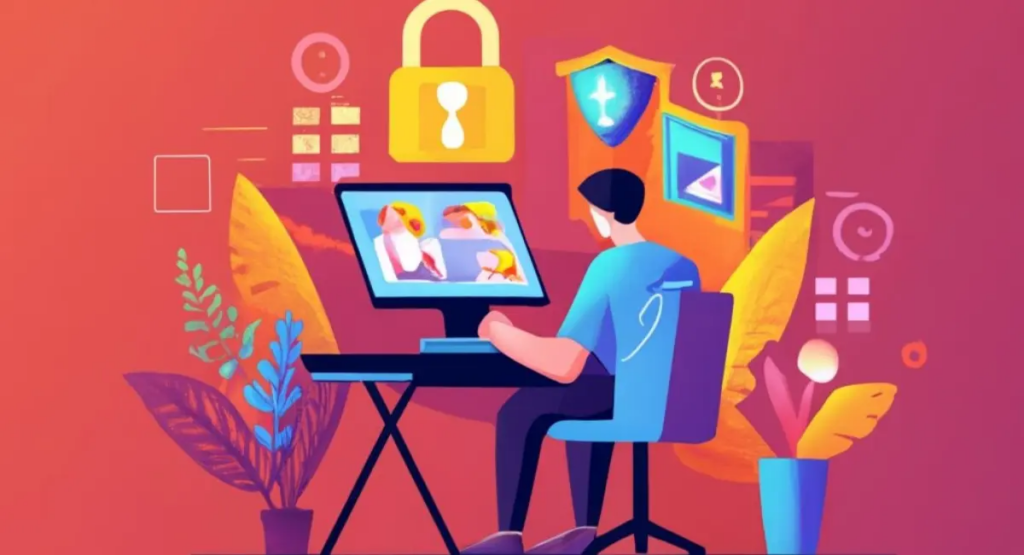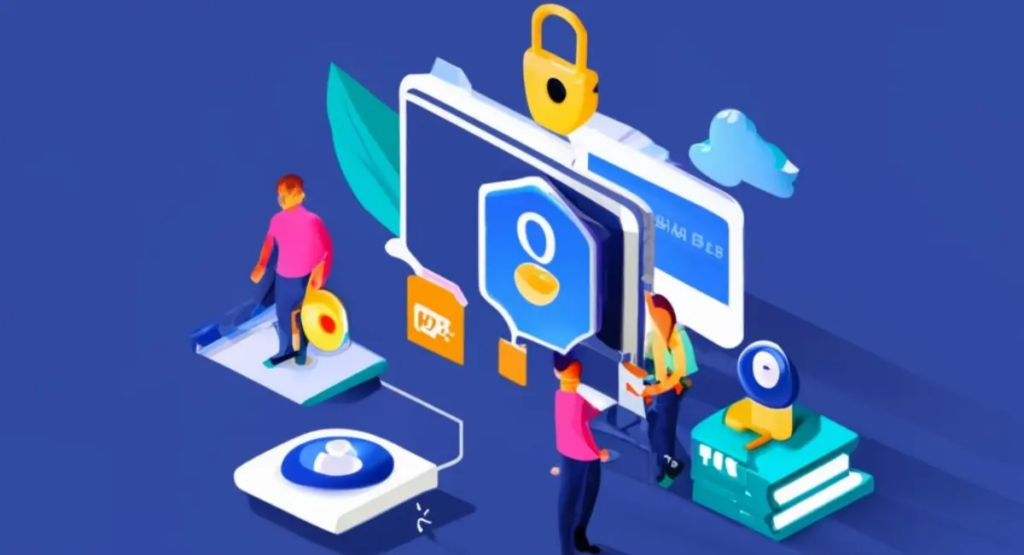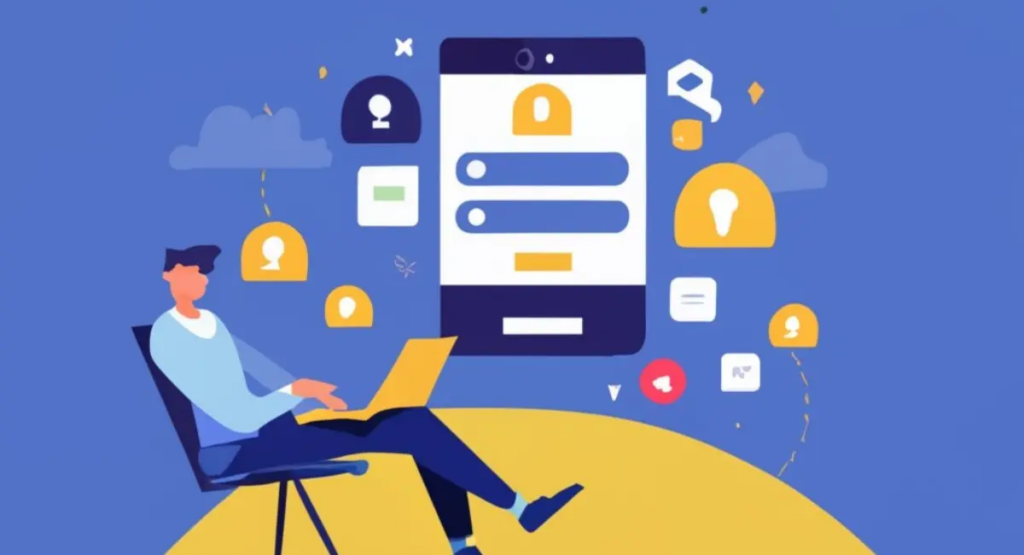Managing and Mitigating Remote Work Security Risks

Remote work brings security risks lurking in the shadows. Securing your home Wi-Fi, protecting sensitive data during video conferences, and staying vigilant is now our shared reality.
Implementing a remote work security policy and educating employees is paramount. These practical tips and strategies are your shield against cyber threats.
Secure your digital fortress today; confidently work from home. But remote work isn’t just about warding off threats.
It’s about embracing the new normal and transforming it into an opportunity. We elevate remote work to a higher standard by managing and mitigating risks. This shift is not only about security; it’s about building trust in a digital landscape.
The big reveal? Remote work security is a journey, not a destination.
Get more out of your business
Get the best employee engagement content every week via mailing list
Key Takeaways
- Implement strong security protocols and technologies
- Educate employees on identifying risks
- Develop and implement a comprehensive policy
- Prioritize remote access security
Best Practices for Remote Work Security

“it’s crucial for businesses to stay alert to evolving cybersecurity trends and threats. The increase in remote work, cloud usage, AI, and IoT expands the attack surface, making it more important than ever to stay prepared.” Faisal Yahya.
Use the best practices for remote work security to ensure the safety of your work environment. Addressing remote work security risks and cyber security risks associated with remote work is necessary.
First, use antivirus and internet security software on your home devices. This will help prevent malware and other malicious attacks. Keep your work devices separate from your family members, and invest in a sliding webcam cover to protect your privacy.
A VPN secures your device and network connection, encrypting and protecting your data from prying eyes. Also, consider using a centralized storage solution to securely store and access your work files.
Regarding home Wi-Fi security, strengthen your network by creating a strong, unique password for your router. Change the SSID to make it harder for third parties to identify your network, and enable network encryption, preferably WPA2.
To enhance security, restrict network access to specific MAC addresses and regularly update the router’s firmware.
Home Wi-Fi Network Security
To strengthen the security of your remote work environment, ensure the safety of your home Wi-Fi network. Securing your home Wi-Fi network against cyber threats is essential to protect your remote work setup.
Start by creating a strong and unique password for your router. This will make it harder for hackers to gain unauthorized access to your network.
Additionally, consider changing your network’s SSID to make it more difficult for third parties to identify it. Enable network encryption, preferably WPA2, to secure the communication between your devices and the router.
For an added layer of security, limit network access to specific MAC addresses. Regularly updating the firmware for your router is also important, as it ensures that any security vulnerabilities are patched.
Phishing Scams and Email Security

Protecting against phishing scams and ensuring email security is crucial for maintaining the integrity of your remote work environment. Phishing scams can lead to the unauthorized access of sensitive information, compromise your data, and even result in financial loss.
To mitigate these risks, it’s crucial to implement effective security measures and educate employees on the best practices.
Here are some critical steps to consider:
- Implement email filters to detect and block phishing attempts.
- Regularly educate employees on the latest phishing techniques and scams.
- Ensure emails can only be accessed securely via a company’s VPN.
- Encrypt data on devices to protect email data if lost or stolen.
- Develop and enforce a remote work security policy that addresses email security and phishing prevention.
Your remote work security policy should outline the steps for employees to follow, including guidelines for identifying and reporting suspicious emails. Employees can stay vigilant and make informed decisions about email security through regular training sessions and updates on emerging threats.
Video Conferencing Security
Implementing strong security measures for video conferencing is essential to safeguarding your remote work environment. With the increasing reliance on video conferencing platforms like Zoom, to ensure security, be aware of risks and take necessary precautions.
One of the major concerns is the phenomenon of ‘Zoom bombing,’ where unauthorized individuals invade and disrupt video conferences, potentially exposing sensitive information. Platforms like Zoom have addressed these security flaws and implemented measures to enhance privacy.
To protect your video conferences, consider requiring passwords for entry and controlling guest access from a waiting room. Additionally, end-to-end encryption is crucial for maintaining privacy and preventing unauthorized access to your conversations.
By prioritizing video conferencing security, you can minimize the risk of privacy breaches and ensure that your remote work environment remains secure.
Stay vigilant, stay protected.
Password and Online Banking Security

Secure your passwords and online banking by following these best practices:
- Make sure your passwords are strong and secure.
- Strengthen passwords and maximize password protection across devices.
- Use long, strong, and unique passwords.
- Protect your online banking.
- Use only accredited software and services for handling funds.
To ensure the security of your passwords, it’s important to create strong and unique passwords. Avoid using common phrases or easily guessable information such as birthdays or names.
To enhance security, it is important to create passwords that include numbers, uppercase, lowercase letters, and special characters. Furthermore, using unique passwords for each online account is vital to minimize the likelihood of multiple accounts being compromised.
Using only trusted and accredited software and services is essential for online banking. Before using a platform, verify its credibility and search for reviews and information to ensure it has a good reputation. Furthermore, always access banking websites through a Secure Hypertext Transfer Protocol (https://) and look for an authenticated security certificate to protect sensitive financial information.
Security Risks of Working Remotely
To keep your remote work environment safe, be alert to the security risks associated with working remotely. Hackers looking to steal sensitive information can easily access unsecured Wi-Fi networks, posing a significant threat.
Using your device for work can also increase the risk of data breaches, especially if it lacks proper security measures.
Human factors, such as negligence or lack of awareness, can further exacerbate these risks. Without adequate training on remote work security, employees may unknowingly engage in unsafe practices that compromise data integrity.
Detecting and responding to security incidents promptly becomes more challenging due to the decreased visibility of remote work.
To mitigate these risks, it’s crucial to implement strong security protocols and technologies, educate employees on identifying risks, and prioritize remote access security.
Securing Personal Devices in a Remote Work Environment

Personal devices pose unique security challenges in remote work, primarily due to the lack of control and visibility over these devices compared to company-owned equipment. Many personal devices may not have adequate security measures, making them vulnerable to cyber threats.
One of the key steps in securing personal devices is ensuring they have the latest security updates installed. This includes updating the operating system, web browsers, and installed applications regularly since many of these updates contain patches for known security vulnerabilities.
Next, consider implementing a comprehensive malware and antivirus solution that can scan and protect against various threats. These programs should be set to update automatically to ensure they can detect the latest threats.
Thirdly, using Virtual Private Networks (VPNs) can provide an added layer of security. A VPN encrypts data transmitted over the internet, protecting it from potential interception by malicious third parties.
Lastly, businesses should have policies that mandate strong, unique passwords for all accounts accessed on personal devices. The use of two-factor authentication should also be encouraged wherever possible.
Addressing these challenges is crucial for maintaining a secure remote work environment and protecting sensitive business data.
Reducing and Addressing Remote Work Security Risks
To effectively reduce and address remote work security risks, you must prioritize the implementation of strong security protocols and technologies. Here are some key measures you should consider:
- Identity Access Management (IAM) & Multi-Factor Authentication (MFA): Implement IAM and MFA to ensure that only authorized individuals can access sensitive data and systems.
- Virtual Private Networks (VPNs): Use VPNs to create secure connections between remote devices and your organization’s network, protecting data transmission from potential threats.
- Encryption of data: Encrypt the sensitive data to prevent unauthorized access and ensure its confidentiality.
- Endpoint management: Implement effective solutions to monitor and control remote devices, ensuring they adhere to security policies and are protected against threats.
- Monitoring and testing: Regularly monitor and test your remote work security measures to identify vulnerabilities, address weaknesses, and stay ahead of emerging threats.
Technology plays a crucial role in enhancing remote work security.
First, Firewall and Antivirus Systems provide the first defense against potential cyber threats. Firewalls monitor all incoming and outgoing traffic, blocking unauthorized access, while antivirus software scans, detects, and eliminates malicious software.
Second, Intrusion Detection and Prevention Systems (IDPS) are vital for identifying potential threats or attacks on the network. They monitor network traffic, detect unusual activity, and take immediate action to prevent or mitigate attacks.
Third, Data Loss Prevention (DLP) technology helps prevent unauthorized data transfer or leaks from the organization. It monitors and controls data movement, ensuring it stays within the corporate network.
Moreover, Secure Web Gateways offer protection against online security threats by enforcing company security policies and filtering malicious internet traffic.
Finally, Virtualization Technology allows safe and secure access to work applications and data, irrespective of the employee’s location or device. It isolates the work environment from the personal one, lowering the risk of data breaches.
By leveraging these technologies, businesses can create a robust security framework for their remote workforce, protecting sensitive information and systems.
Regular Monitoring and Testing in Remote Work Security

Regular monitoring and testing play a vital role in remote work security. Firstly, they help identify potential vulnerabilities in the system before they can be exploited, thereby preventing possible security breaches.
Secondly, they ensure that all security measures function as intended and allow any necessary adjustments to be made promptly. Moreover, regular monitoring provides insights into unusual network activities, enabling quick response to potential threats.
Lastly, ongoing testing of security protocols ensures they remain effective against evolving cyber threats, keeping the remote work environment secure and up-to-date with the latest defense mechanisms.
All these benefits contribute to a more robust and reliable remote work security framework.
Conclusion
In conclusion, you can manage and mitigate security risks associated with remote work by implementing the best practices and strategies outlined.
By securing your home Wi-Fi network, being vigilant against phishing scams, ensuring video conferencing security, and practicing strong password and online banking security, you can work confidently from home while minimizing the chances of falling victim to cyber threats.
Stay informed, stay proactive, and prioritize the safety of your remote work environment.
Frequently Asked Questions
How Can Employees Strengthen Their Password Protection Across Devices?
To strengthen your password protection across devices, create long and unique passwords, use accredited software and services for online banking, and access banking websites via a secure protocol (https://).
What Steps Can Be Taken to Mitigate the Risks of Phishing Scams and Email Security Breaches?
Be cautious and implement email filters to mitigate the risks of phishing scams and email security breaches. Educate yourself on the latest techniques and scams, access emails securely, and encrypt data on devices.
What Are Some Best Practices for Securing Home Wi-Fi Networks?
To secure your home Wi-Fi network, strengthen its security by using a unique, strong password for your router, enabling network encryption, limiting access to specific MAC addresses, and regularly updating your router’s firmware.
How Can Employers Ensure Data Protection and Regulatory Compliance for Remote Work?
To ensure data protection and comply with regulations while working remotely, employers should implement strong security protocols, educate employees on risks, develop comprehensive policies, prioritize remote access security, and utilize identity access management, encryption, and endpoint management.


